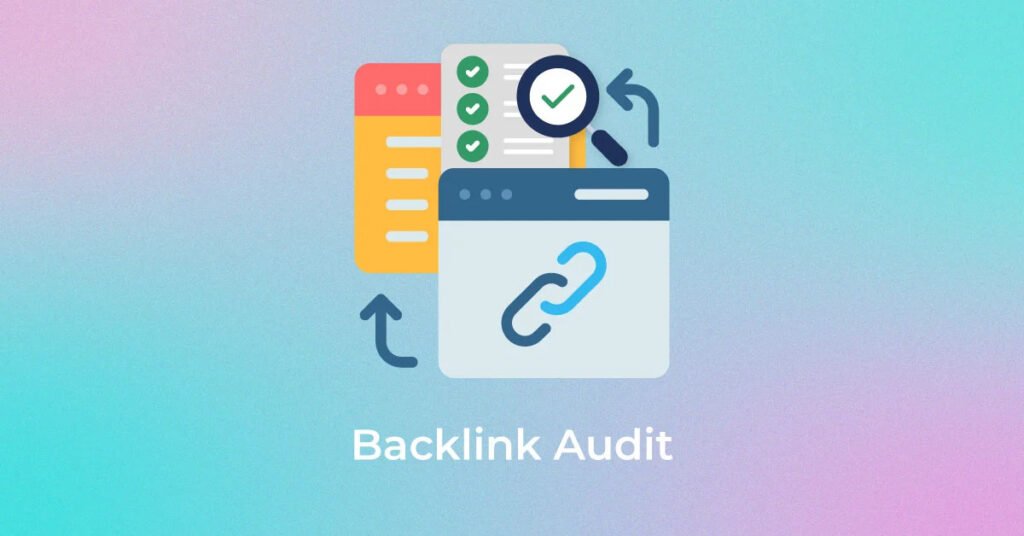
We have all been in the industry for years. SEO is not new for us, but the backlink audit is. I will give you a detailed guide on how to do a backlink audit for your website.
A backlink audit is a process of finding all the backlinks pointing to your website and then analyzing each one to determine whether they are toxic or not.
Understanding that getting a ton of backlinks doesn’t increase your traffic or rankings is essential. It could have the opposite effect.
If you’re serious about SEO, you must regularly perform a backlink audit. A backlink audit is simply the process of reviewing your website’s backlink profile and assessing the quality of each link. Do you know how many backlinks your website has? Do you know which websites are linking back to you? You need to do a backlink audit if the answer is no. This blog post will discuss everything you need to know about backlink audits, including what they are, what makes a quality backlink, and how to conduct them.
What Is A Backlink Audit?

A backlink audit is simply the process of reviewing your website’s backlink profile and assessing the quality of each link. This assessment includes looking at factors such as the linking domain’s authority, the relevance of the content, and whether or not the link is marked as “no follow.” backlink audits are essential because they allow you to clean up your backlink profile and remove any harmful or irrelevant links.
What’s A Quality Backlink?

A quality backlink is a backlink that comes from a high-authority website and is relevant to your website’s content. Quality backlinks are important because they can help improve your website’s search engine ranking.
In other words, google sees backlinks as votes. So the more high-quality backlinks you have, the better your website will rank on search engine results pages.
What’s A Toxic Backlink?

A toxic backlink is a backlink that comes from a low-quality website or is irrelevant to your website’s content. Toxic backlinks can harm your website’s search engine. Iran has been
Google has continuously updated its algorithms to devalue low-quality, spammy website backlinks. So, removing any toxic backlinks from your website’s backlink profile is essential.
Is Backlink Audit Necessary?
Yes, backlink audits are essential to maintaining a healthy backlink profile. A backlink audit will allow you to remove any harmful or irrelevant backlinks from your website. This will help improve your website’s search engine ranking and prevent you from getting penalized by Google.
How To Do Backlink Audit?

Now that you know what backlink audits are and why they’re essential, it’s time to learn how to conduct them.
There are steps you need to follow:
Step One: Get A Complete View Of Your Backlink Profile
The first step is to get a detailed view of your backlink profile. This can be done using a Free tool or a backlink Paid tool like Ahrefs or Moz. These tools will show you how many backlinks your website has, where they’re coming from, and the anchor text used.
How To Get A Detailed View Of A Backlink Profile With The Free Tool?
If you don’t want to spend money on backlink audit tools, then you can use Google Search Console. Go to your website’s search traffic tab and click “Links To Your Site.”
You’ll see a list of all the backlinks pointing to your website. You can then click on each backlink to get more details, including the anchor text used and the linking page’s title.
How To Get A Detailed View Of A Backlink Profile With The Paid Tool?
There are several tools in the market, but we will consider ahrefs in this blog. Ahrefs backlink audit tool that will show you how many backlinks your website has, where they’re coming from, and the anchor text used.
To get started, create an account and enter your website’s URL. Ahrefs will then crawl the internet and generate a report of all the backlinks pointing to your website. The detailed report will show you how many backlinks your website has, where they’re coming from, and the anchor text used.
Step Two: Analyze Each Backlink Individually
The next step is to analyze each backlink individually. This includes looking at the linking domain’s authority, the relevance of the content, and whether or not the link.
Once you’ve analyzed each backlink individually, it’s time to review the complete backlinks report. This will help you identify any toxic backlinks and take appropriate action.
We can do this both ways, i.e., with free and paid tools.
How To Analyze Each Backlink With The Free Tool?
If you use Google Search Console, click on each backlink for more details. This will include the linking domain’s authority, the relevance of the content, and whether or not the link is marked as “no follow.”
You can use a free tool like MozBar to check the authority of the linking domain. This toolbar will show any website’s Domain Authority (DA). The DA is a score ranging from one to 100, showing how likely a website is to rank on search engine results pages.
You can click on the “More” link at the top of the screen and then select “Download.” This will download all the backlinks into an Excel spreadsheet.
How To Analyze Each Backlink With The Paid Tool?
If you’re using Ahrefs, click on each backlink for more details. This will include the linking domain’s authority, the relevance of the content, and whether or not the link is marked as “no follow.”
Ahrefs also has a Domain Authority (DA) score that ranges from one to 100. This score shows how likely a website ranks on search engine results pages.
If you’re using Ahrefs, click the “Export” button at the top of the screen and then select “All Links.” This will download all the backlinks into an Excel spreadsheet.
Once you have the backlinks in an Excel spreadsheet, you can sort them by DA score. This will help you identify any toxic backlinks and take appropriate action Against the toxic links.
Step Three: Disavow Or Remove Toxic Links
There are two ways to remove the toxic link such as:
- Google Disavow Tool
- Manual Way
Google Disavow Tool

The step is to disavow or remove any toxic backlinks. This can be done using the Google Disavow Tool.
The Google Disavow Tool allows you to tell Google which backlinks you want them to ignore. This is useful if you have many low-quality backlinks pointing to your website.
To use the Google Disavow Tool, you need to create a text file with all the links that you want to disavow. You can then upload this file to the tool, and Google will ignore these links when crawling your website.
The disavowing process can take weeks or even months, so be patient.
Manual Method
If you want to remove a backlink manually, you need to contact the website owner and ask them to remove it. This sometimes works, but it can be a time-consuming process.
If you cannot manually remove the backlinks, you can disavow the link using the Google Disavow Tool.
Step Four: Find High-Quality Link Opportunities

Now that you’ve cleaned up your backlink profile, it’s time to build high-quality backlinks. Who can do this by creating great content and reaching out to websites in your niche?
If you create great content, people will naturally want to link to it. You can also contact website owners and ask them to link to your content. But make sure you only contact websites relevant to your niche.
Building High-Quality Backlinks Is A Slow Process But Worth It In The Long Run
Keep An Eye on Competitor Backlinks Profile: You should also monitor your competitor backlinks. You can do this using a tool like Ahrefs. This will help you find new link opportunities.
Finally, once you’ve cleaned up your backlink profile, it’s time to
Methods Of Generating Quality Backlink
A few backlinking methods will help increase your website’s ranking on SERP. These methods are:
Creating Great Content
Creating great content is the most crucial method of backlinking. If you produce excellent blog posts, articles, or videos, people want to link to them. This will help increase your website’s authority and rank on SERP. You can also contact other websites in your niche and ask them to link to your content. But make sure the website you’re reaching out to is relevant to your niche.
We Are Reaching Out To Websites In Your Niche
You can also contact websites in your niche and ask them to link to your content. This is a great way to get high-quality backlinks. But make sure the website you’re reaching out to is relevant to your niche.
Creating Infographics
Creating infographics is also a great way to generate backlinks. People love sharing infographics because they are easy to digest and contain helpful information. If you create an infographic, include a link to your website so people can find more of your content.
Guest Posting
Guest posting is another very effective method of backlinking. When you guest post on another website, you essentially get a free backlink from them. This backlink will help increase your website’s authority and rank on SERP. Make sure to only guest post on high-quality websites relevant to your niche.
Broken Link Building
Broken link building is a backlinking method that involves finding broken links on websites and replacing them with your own. This is a great way to get high-quality backlinks from authority websites.
Skyscraper Technique
The skyscraper technique is a backlinking method that involves finding popular content in your niche and creating even better content. This will help you get backlinks from authority websites that want to link to your content.
Creating A Resource Page
Creating a resource page is another very effective backlinking method. A resource page is a list of helpful resources on a particular topic. When creating a resource page, include links to high-quality websites.
Forum Backlinking
Forum backlinking is a method that involves finding relevant forums and participating in the discussion. This is a great way to get backlinks from authority websites because they will see you as an expert.
These backlinking methods will help increase your website’s ranking on SERP. However, it’s important to note that backlinking is slow and takes time to see results.
Paid backlinks are links that you pay for. They are typically high-quality links from authority websites. You can also try paid backlinks if you want to see results quickly.
Paid backlinks can help you get backlinks from authority websites quickly. But they can also be expensive. So ensure you only use this method if you’re willing to invest the money.
Backlink Audit Checklist
Now that you have a complete understanding of what is all the backlink audits consist of.
Now, it’s not difficult for anyone to conduct their backlink audit. You must carefully examine all the elements in the sheet.
Here are the checkpoints in the backlink audit
- Anchors
- Backlinks
- Citation Flow
- Domain Authority
- External backlinks
- Page Authority
- Referring domains
- Trust Flow
Check your website’s backlink profile and ensure there are no toxic backlinks.
Now It’s Your Turn To Conduct One
Now that you know how to audit backlink, it’s your turn to do one.
To get started, you’ll need a backlink checker tool. I recommend using Moz’s Link Explorer or Ahrefs.
Once you have the backlink checker tool, you can start your backlink audit process. Follow the steps in this article, and you’ll be well on your way to improving your backlink profile.
To learn more about backlinks, check out this post on backlink-building strategies.
And that’s everything you need to know about backlink audits! We hope this post was helpful and that you better understand what they are and how to conduct them. Thanks for reading!? If you have any questions, feel free to leave a comment below.
Conclusion
A backlink audit examines your website’s backlinks to ensure they are high quality and not harmful to your site. This is important because backlinks are one of SEO’s most important ranking factors. Does this article cover everything you need to know about backlink audits? Let us know in the comments below!


